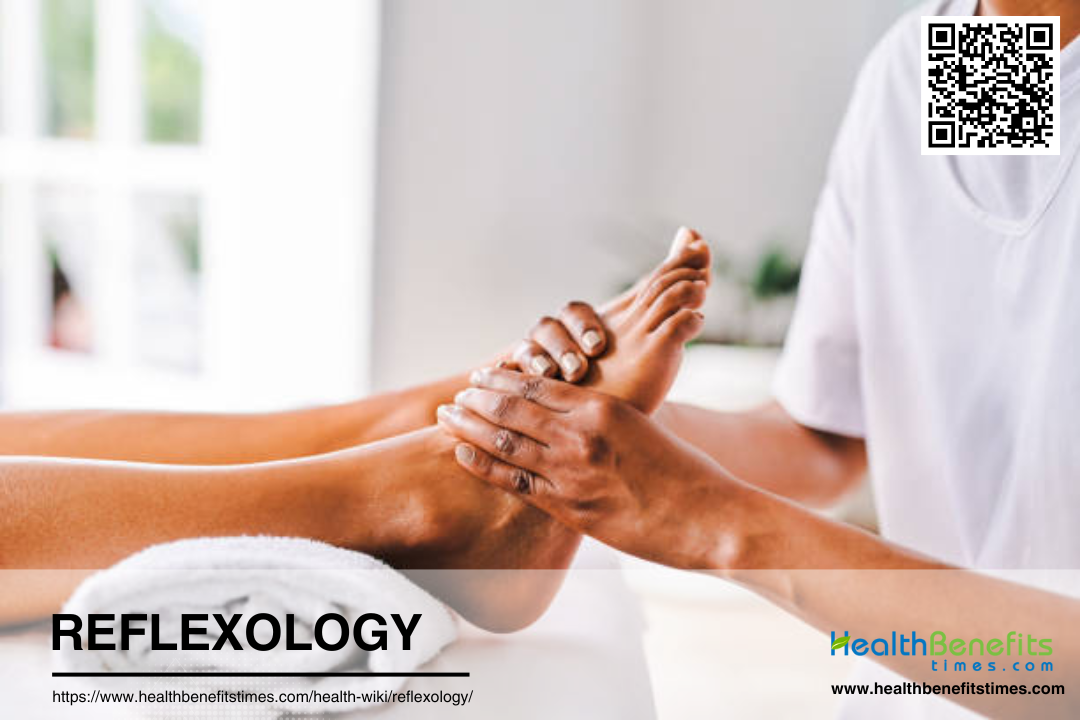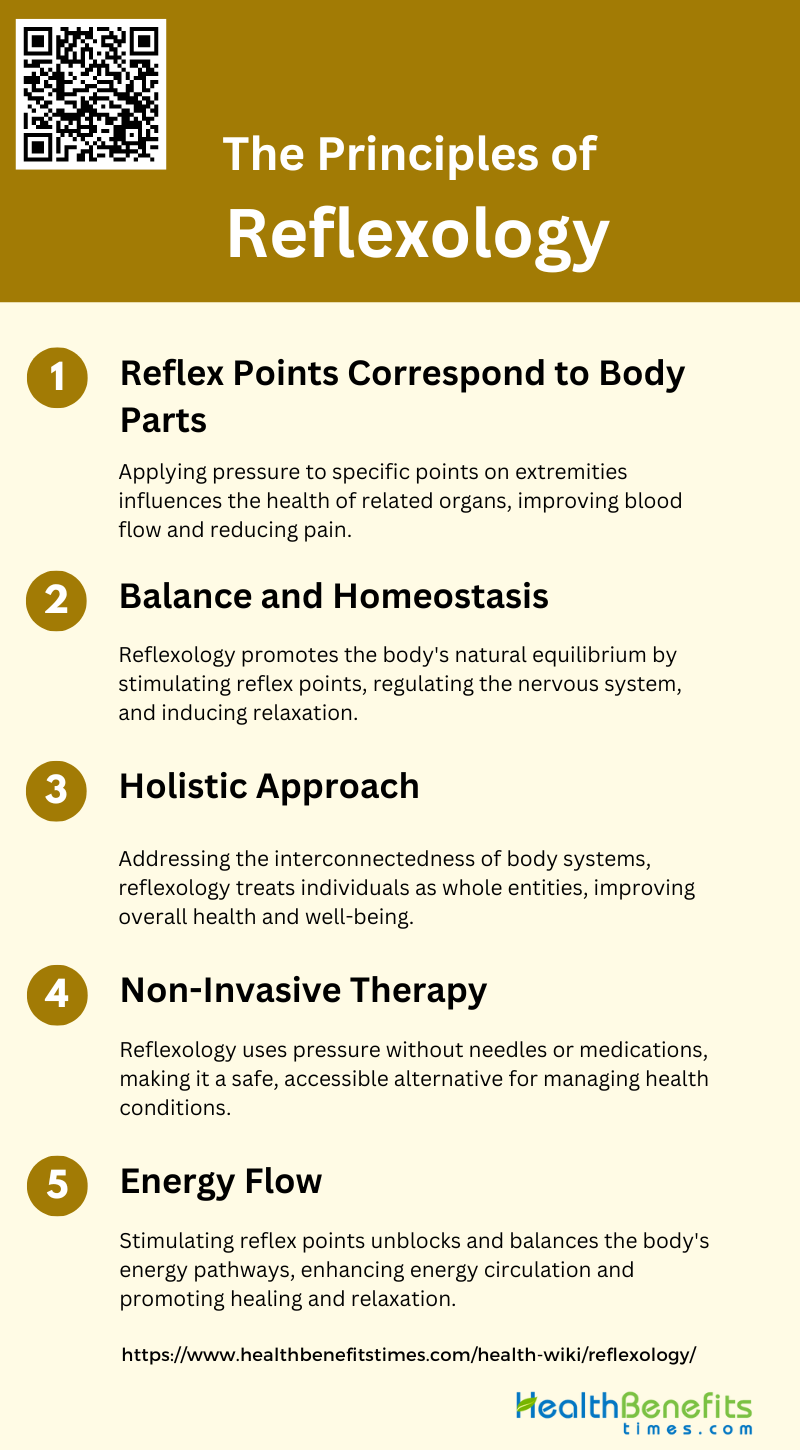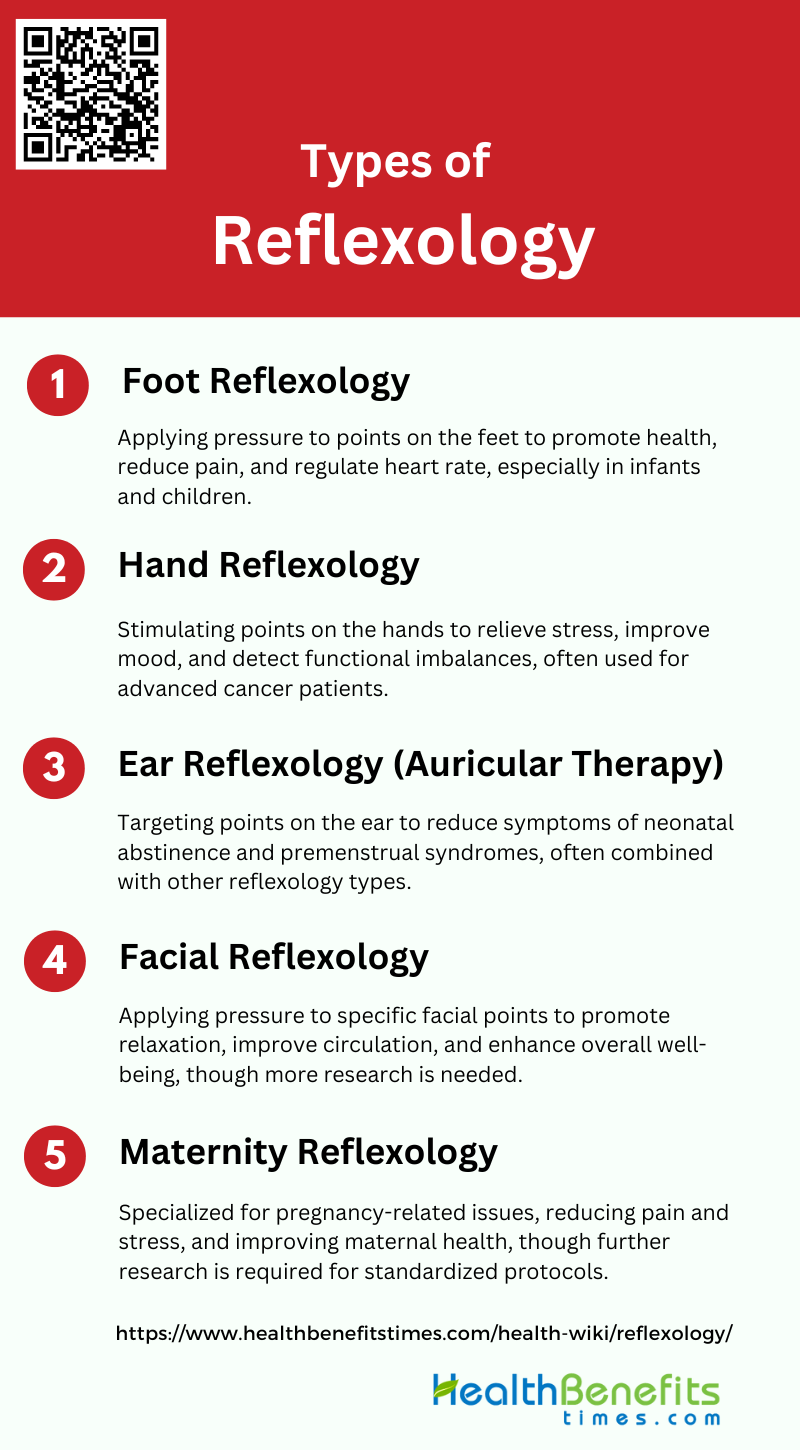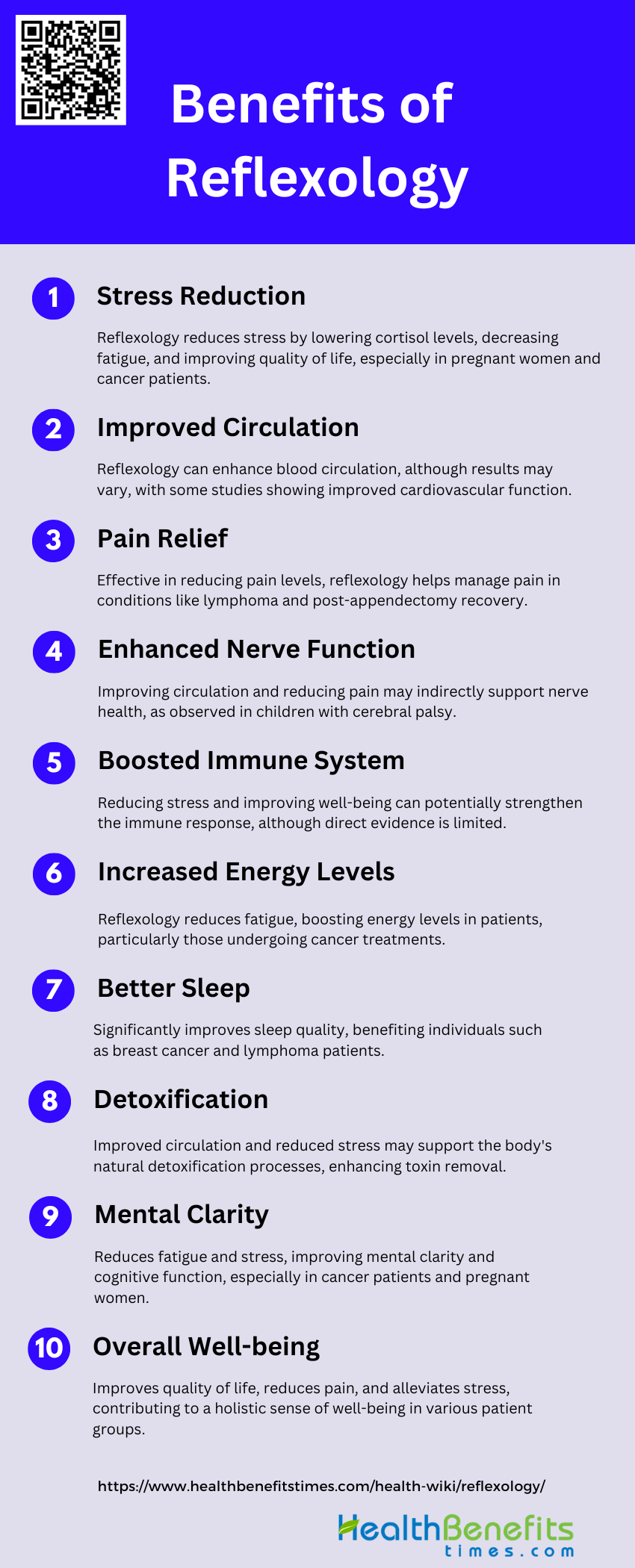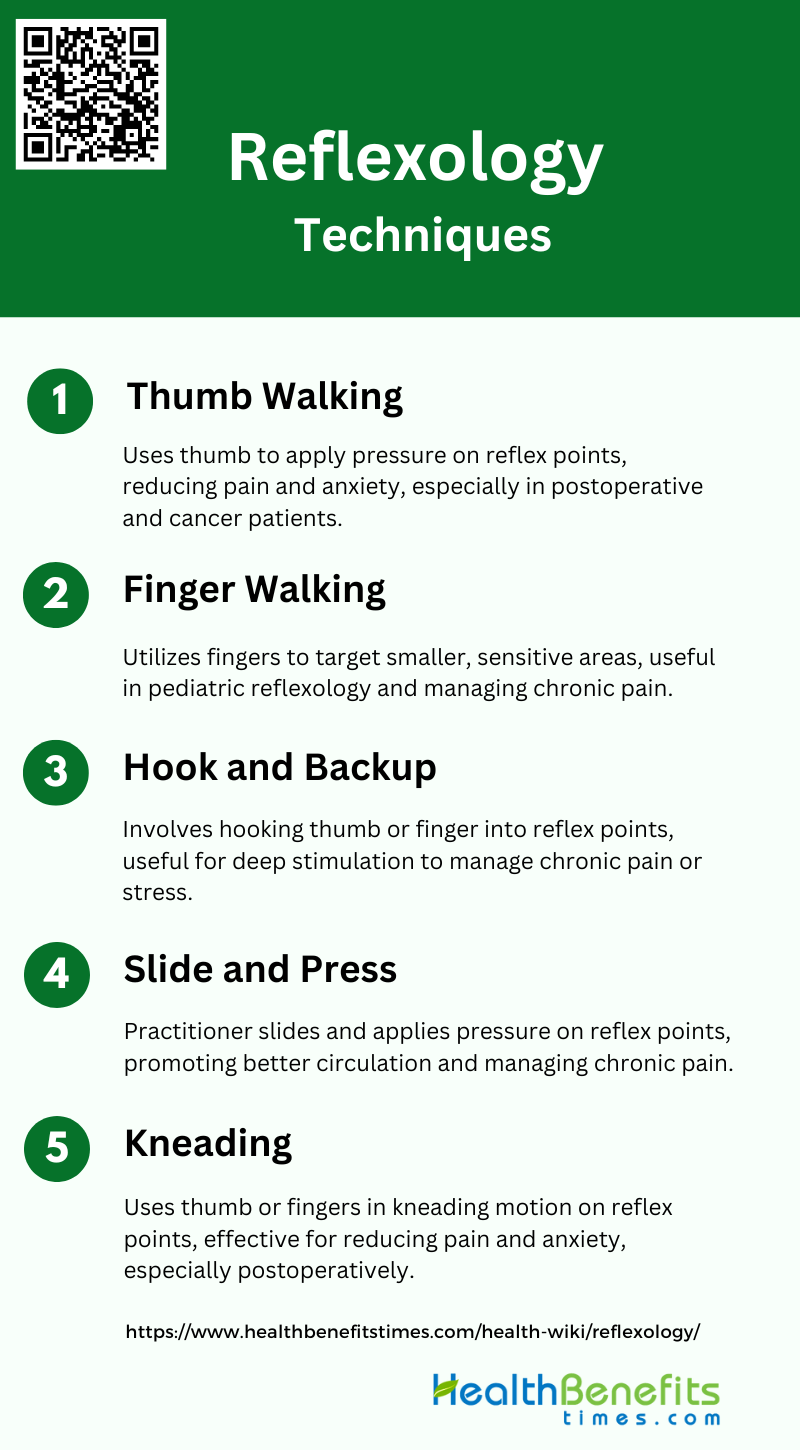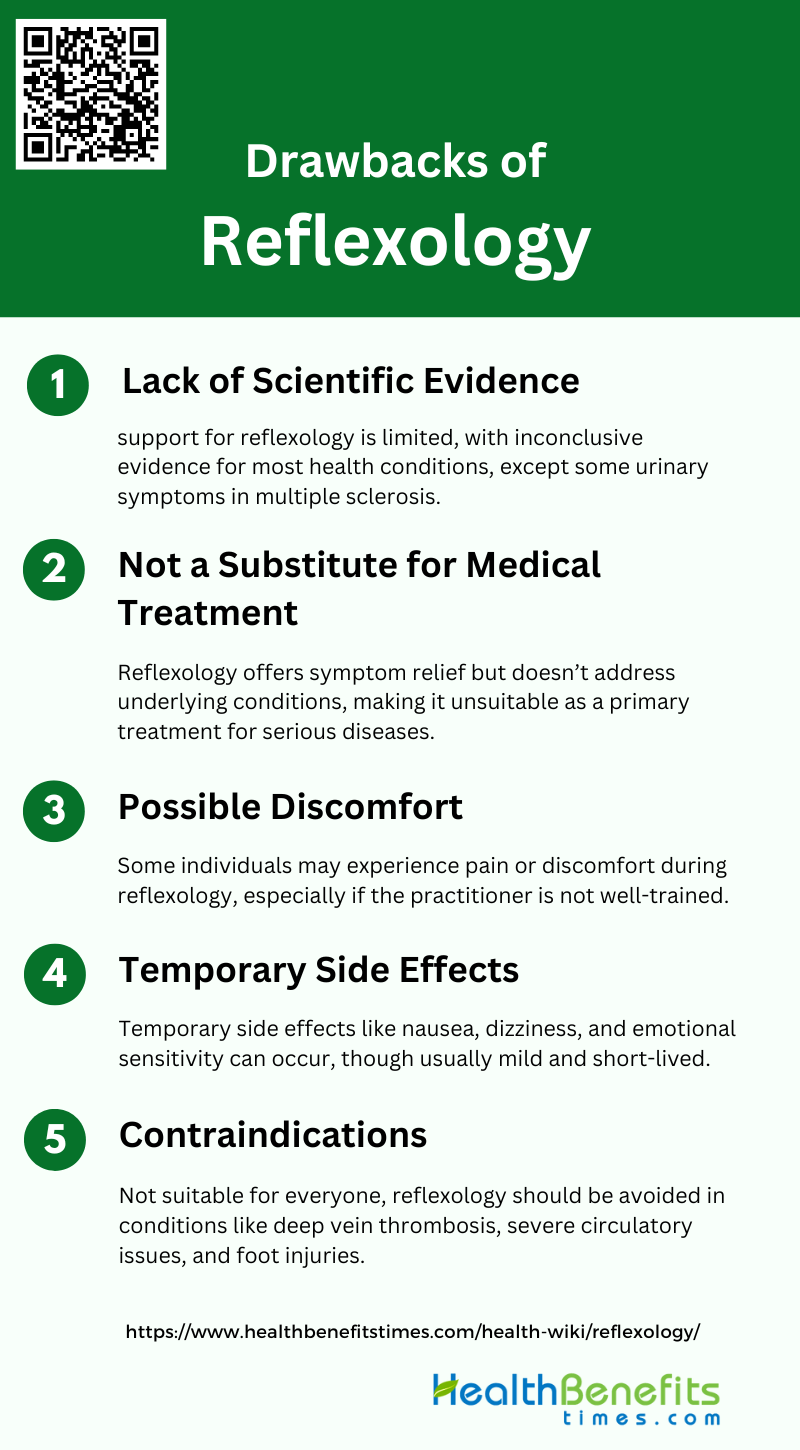Reflexology is a complementary therapy that involves applying pressure to specific points on the feet, hands, or ears, which are believed to correspond to different organs and systems in the body. The practice aims to promote relaxation, improve circulation, and support overall well-being by stimulating these reflex points. Reflexology is often used in palliative care to alleviate symptoms such as pain, constipation, and fatigue, although its effectiveness beyond the placebo effect remains a topic of debate among researchers. The therapy is considered simple and non-invasive, making it a popular choice for those seeking alternative health treatments.
History of Reflexology
The concept of reflexology, which maps these reflex points to various internal organs and body parts, has roots in ancient civilizations but gained significant development in the early 20th century, particularly in Russia through the works of Vladimir Mikhailovich Bekhterev and Naum Efimovich Ischlondsky. Despite the lack of concrete scientific evidence supporting its efficacy, reflexology remains popular due to its non-invasive and holistic approach to health and well-being. Modern reflexology is recognized as a complementary therapy that can help regulate the autonomic nervous system, alleviate anxiety, and promote relaxation. The practice continues to be widely accepted and integrated into various healthcare systems, emphasizing the need for adequate training to ensure consistent and effective treatment.
How Reflexology Works?
Practitioners use reflex maps to guide their treatment, aiming to promote relaxation, improve circulation, and support overall well-being. Despite its widespread use, scientific evidence supporting the efficacy of reflexology remains limited. Some studies have shown potential benefits, such as reduced fatigue and improved quality of life in breast cancer patients undergoing radiation therapy, and decreased anxiety during minimally invasive surgery. However, systematic reviews have generally found insufficient evidence to confirm specific health benefits, with some exceptions like urinary symptoms in multiple sclerosis. Reflexology is considered safe and non-invasive, making it a popular choice for those seeking alternative or complementary treatments. Further research is needed to better understand its mechanisms and potential therapeutic effects.
The Principles of Reflexology
Reflexology is a therapeutic practice that involves applying pressure to specific points on the feet, hands, and ears to promote overall health and well-being. These points correspond to different organs and systems in the body, and stimulating them can help alleviate stress, improve circulation, and restore balance. Below are the key principles that underpin this holistic approach:
1. Reflex Points Correspond to Body Parts
Reflexology is based on the principle that specific points on the feet, hands, and ears correspond to different parts of the body. By applying pressure to these reflex points, practitioners believe they can influence the health of related organs and systems. This concept is supported by the idea that the body is mapped onto these extremities, allowing for targeted therapeutic interventions. Studies have shown that reflexology can have various physiological effects, such as improving blood flow and reducing pain, by stimulating these reflex points.
2. Balance and Homeostasis
One of the core principles of reflexology is its ability to promote balance and homeostasis within the body. Reflexology aims to restore the body’s natural equilibrium by stimulating reflex points that correspond to different organs and systems. This therapeutic approach has been shown to regulate autonomic nervous system activities, alleviate anxiety, and induce relaxation, thereby contributing to overall well-being. Reflexology’s non-invasive nature makes it a popular complementary therapy for maintaining homeostasis and enhancing the body’s self-healing capabilities.
3. Holistic Approach
This therapy emphasizes the interconnectedness of body systems and aims to treat the person as a whole. Practitioners believe that by addressing imbalances in specific reflex points, they can improve the overall health of the individual. This holistic perspective is supported by evidence suggesting that reflexology can positively impact various conditions, including pain, anxiety, and physiological symptoms. The holistic approach of reflexology aligns with the growing trend towards integrative and complementary medicine.
4. Non-Invasive Therapy
This makes it a safe and accessible option for individuals seeking alternative or complementary treatments. The non-invasive nature of reflexology has contributed to its popularity, especially among those looking for gentle and natural ways to manage health conditions. Research has shown that reflexology can be effective in reducing pain, improving circulation, and promoting relaxation without the risks associated with more invasive procedures.
5. Energy Flow
The concept of energy flow is central to reflexology, which posits that the body has an intrinsic energy system that can be influenced through reflex points. Practitioners believe that blockages or imbalances in this energy flow can lead to health issues. By stimulating specific reflex points, reflexology aims to unblock and balance the body’s energy pathways, thereby promoting healing and well-being. This principle is supported by studies indicating that reflexology can enhance energy circulation and improve physiological responses, contributing to a sense of relaxation and overall health. The focus on energy flow aligns with traditional healing practices and underscores the therapeutic potential of reflexology.
Types of Reflexology
Here are some common types of reflexology:
1. Foot Reflexology
Foot reflexology involves applying pressure to specific points on the feet, which correspond to different organs and systems in the body. This practice is based on the belief that stimulating these reflex points can promote health and well-being. Studies have shown that foot reflexology can be effective in reducing pain, regulating heart rate, and increasing oxygen saturation in infants and children. Additionally, it has been found to alleviate symptoms of neonatal abstinence syndrome and premenstrual syndrome. Despite the lack of concrete evidence for specific health conditions, foot reflexology is widely accepted due to its non-invasive nature and anecdotal reports of positive effects.
2. Hand Reflexology
Hand reflexology operates on the same principles as foot reflexology, where specific points on the hands are stimulated to affect corresponding parts of the body. This form of reflexology is often used to relieve stress and improve overall health. Research indicates that hand reflexology can significantly reduce premenstrual symptoms and improve mood in patients with advanced cancer . Practitioners believe that hand reflexology can detect and address functional imbalances in the body, although the evidence remains largely anecdotal. The practice is gaining popularity as a complementary therapy due to its simplicity and non-invasive nature.
3. Ear Reflexology (Auricular Therapy)
Ear reflexology, also known as auricular therapy, involves stimulating specific points on the ear that correspond to various body parts and systems. This method has been shown to be effective in reducing symptoms of neonatal abstinence syndrome and premenstrual syndrome. Auricular therapy is often used in combination with other forms of reflexology to enhance its therapeutic effects. Studies have demonstrated that both ear reflexology and foot reflexology can significantly alleviate symptoms, although ear reflexology may require longer application times to achieve similar results. The practice is considered safe and beneficial for various health conditions.
4. Facial Reflexology
Facial reflexology is a less common but growing practice that involves applying pressure to specific points on the face. This form of reflexology is believed to promote relaxation, improve circulation, and enhance overall well-being. While there is limited research specifically on facial reflexology, the principles are similar to those of foot and hand reflexology. Practitioners claim that facial reflexology can help detect and address imbalances in the body, although more rigorous studies are needed to substantiate these claims. The practice is gaining traction as a holistic approach to health and wellness.
5. Maternity Reflexology
Maternity reflexology is a specialized form of reflexology aimed at addressing pregnancy-related issues such as low back and pelvic girdle pain, stress, and anxiety. Research has shown that reflexology can significantly reduce pain intensity and frequency in pregnant women, as well as lower stress levels by affecting biochemical markers like beta-endorphin and cortisol. Despite its potential benefits, maternity reflexology is under-researched and requires further investigation to establish standardized protocols and guidelines. The practice is considered safe and beneficial for managing pregnancy-related discomforts and promoting overall maternal health.
Benefits of Reflexology
Reflexology offers a range of benefits that can contribute to overall well-being. Here are some of the key benefits:
1. Stress Reduction
Reflexology has been shown to reduce stress by influencing physiological and biochemical stress parameters. For instance, a study on pregnant women experiencing low back and pelvic girdle pain found that reflexology significantly reduced pain frequency and stress levels, as indicated by decreased cortisol levels. Additionally, reflexology has been associated with lower levels of fatigue and improved quality of life in breast cancer patients undergoing radiation therapy, which indirectly suggests a reduction in stress.
2. Improved Circulation
Reflexology is believed to enhance blood circulation, although the evidence is mixed. A study on healthy volunteers found that reflexology applied to specific points on the feet corresponding to the heart resulted in a modest decrease in cardiac index, suggesting improved cardiovascular function. However, another study on patients with chronic heart failure found no immediate hemodynamic effects, indicating that the benefits may vary depending on the individual’s health condition.
3. Pain Relief
Reflexology has been widely studied for its pain-relieving effects. A clinical trial on lymphoma patients demonstrated that reflexology significantly reduced pain levels. Similarly, another study found that reflexology was effective in managing post-appendectomy pain, reducing both pain intensity and analgesic consumption. These findings suggest that reflexology can be a valuable complementary therapy for pain management.
4. Enhanced Nerve Function
While direct evidence on enhanced nerve function is limited, reflexology’s ability to reduce pain and improve circulation may indirectly support nerve health. For example, the reduction in pain and improvement in motor skills observed in children with cerebral palsy following reflexology treatments suggest potential benefits for nerve function. However, more targeted research is needed to confirm these effects.
5. Boosted Immune System
The impact of reflexology on the immune system is not well-documented. However, the reduction in stress and improvement in overall well-being observed in various studies could potentially lead to a stronger immune response. For instance, the decrease in cortisol levels and improvement in quality of life in pregnant women and breast cancer patients may indirectly support immune function.
6. Increased Energy Levels
In a study on breast cancer patients, reflexology significantly reduced fatigue levels after five weeks of treatment. Similarly, lymphoma patients reported reduced fatigue following reflexology sessions, indicating that this therapy can help boost energy levels.
7. Better Sleep
Improved sleep quality is one of the well-documented benefits of reflexology. A study on breast cancer patients undergoing radiation therapy found that reflexology significantly improved sleep quality after ten weeks of treatment. Another study on lymphoma patients also reported better sleep quality following reflexology sessions, highlighting its potential as a non-pharmacological intervention for sleep disturbances.
8. Detoxification
While direct evidence on detoxification is limited, reflexology’s ability to improve circulation and reduce stress may support the body’s natural detoxification processes. Improved blood flow can enhance the removal of toxins from the body, and reduced stress can alleviate the burden on detoxification organs like the liver and kidneys.
9. Mental Clarity
Reflexology has been associated with improved mental clarity through its stress-reducing and pain-relieving effects. For example, the reduction in fatigue and improvement in quality of life observed in breast cancer patients suggest that reflexology can enhance mental clarity and cognitive function. Additionally, the decrease in stress levels in pregnant women further supports this benefit.
10. Overall Well-being
Overall well-being is a common outcome of reflexology treatments. Studies have shown that reflexology can improve quality of life, reduce pain, and alleviate stress, all of which contribute to a sense of well-being. For instance, breast cancer patients undergoing radiation therapy reported preserved quality of life and reduced fatigue and pain levels, indicating an overall improvement in well-being. Similarly, pregnant women experienced reduced pain and stress, further supporting the holistic benefits of reflexology.
Who Should Avoid Reflexology?
Certain individuals should exercise caution or avoid this therapy altogether due to specific health conditions or circumstances. The following groups are advised to avoid reflexology:
1. Pregnant Women: Reflexology is generally not recommended for pregnant women, especially during the first trimester, as it may induce labor or cause complications.
2. People with Foot Injuries: Individuals with foot fractures, wounds, or severe foot conditions should avoid reflexology to prevent exacerbating the injury.
3. Individuals with Circulatory Problems: Those with severe circulatory issues, such as blood clots or deep vein thrombosis, should avoid reflexology as it might worsen their condition.
4. People with Severe Osteoporosis: Reflexology involves applying pressure to the feet, which can be harmful to individuals with severe osteoporosis due to the fragility of their bones.
5. Patients with Infections or Contagious Diseases: Reflexology should be avoided by those with contagious skin conditions, infections, or illnesses to prevent spreading the infection and worsening their health.
Reflexology Techniques
Reflexology is an ancient practice that involves applying pressure to specific points on the feet, hands, and ears to promote overall health and well-being. These techniques are believed to correspond to different organs and systems in the body, offering a holistic approach to healing. Below are some common reflexology techniques to help you get started:
1. Thumb Walking
Thumb walking is a fundamental reflexology technique that involves using the thumb to apply pressure in a walking motion across specific reflex points on the feet or hands. This technique is believed to stimulate various organs and systems within the body, promoting overall health and well-being. According to research, thumb walking can help in reducing pain and anxiety, particularly in postoperative patients. It is also used to manage symptoms in cancer patients, providing both physical and psychological relief. The method is non-invasive and can be easily incorporated into regular reflexology sessions to enhance therapeutic outcomes.
2. Finger Walking
Finger walking is similar to thumb walking but utilizes the fingers instead of the thumb to apply pressure in a walking motion across reflex points. This technique is often used to target smaller or more sensitive areas that may be difficult to reach with the thumb. Reflexology practitioners believe that finger walking can help in detecting and addressing health issues by stimulating the corresponding reflex points on the hands and feet. It is particularly useful in pediatric reflexology, where gentle pressure is required to avoid discomfort. The technique is also effective in managing chronic pain and improving overall well-being.
3. Hook and Backup
The hook and backup technique involves hooking the thumb or finger into a reflex point and then pulling back slightly to apply pressure. This method is used to target deeper reflex points that may not be easily accessible through thumb or finger walking. Practitioners believe that this technique can help in releasing blocked energy and improving the flow of life force throughout the body. It is often used in cases where more intense stimulation is required to achieve therapeutic benefits, such as in the management of chronic pain or stress-related conditions . Proper training is essential to perform this technique effectively and safely.
4. Slide and Press
Slide and press is a technique where the practitioner slides their thumb or finger along a reflex point and then applies pressure. This method is used to cover larger areas and ensure that all relevant reflex points are stimulated. Practitioners believe that slide and press can help in improving overall health by promoting better circulation and energy flow. It is particularly useful in managing chronic pain and improving well-being in patients with various health conditions. The technique is non-invasive and can be easily incorporated into regular reflexology sessions to enhance therapeutic outcomes.
5. Kneading
Kneading involves using the thumb or fingers to apply a kneading motion to the reflex points on the feet or hands. This technique is believed to help in releasing tension and improving the flow of life force throughout the body. Research indicates that kneading can be effective in reducing pain and anxiety, particularly in postoperative settings. It is also used to manage symptoms in cancer patients, providing both physical and psychological relief. The technique is non-invasive and can be easily incorporated into regular reflexology sessions to enhance therapeutic outcomes. Proper training is essential to perform this technique effectively and safely.
Drawbacks of Reflexology
While reflexology is often praised for its potential health benefits, it is not without its drawbacks. Some individuals may experience discomfort or adverse reactions, and the effectiveness of reflexology is still debated within the medical community. Below are some common drawbacks associated with reflexology:
1. Lack of Scientific Evidence
Despite anecdotal reports of benefits, the scientific evidence supporting reflexology is limited and inconclusive. Systematic reviews have found that reflexology does not have a significant effect on most health conditions. For instance, a review of studies on reflexology’s efficacy found no substantial evidence supporting its effectiveness, except for urinary symptoms in multiple sclerosis patients. Another study concluded that while reflexology might improve certain symptoms like fatigue and quality of life in breast cancer patients, high-level evidence confirming its effectiveness is still lacking. Therefore, the lack of robust scientific evidence remains a significant drawback.
2. Not a Substitute for Medical Treatment
While it may offer some relief for symptoms like pain and anxiety, it does not address the underlying causes of medical conditions. For example, a study on chronic heart failure patients found that reflexology had no immediate haemodynamic effects, suggesting it cannot replace standard medical care. Similarly, another study emphasized that reflexology should be used as a complementary therapy rather than a primary treatment, especially in serious conditions like cancer. Thus, relying solely on reflexology can be dangerous and is not recommended.
3. Possible Discomfort
Some individuals may experience discomfort during or after reflexology sessions. Reflexology involves applying pressure to specific areas of the feet, hands, or ears, which can sometimes cause pain or discomfort, especially if the practitioner is not well-trained. A pilot study noted that reflexology involves palpating tender or painful areas, which might indicate functional imbalances but can also cause discomfort. Additionally, another study reported that while reflexology might reduce pain in some cases, it can also lead to temporary discomfort during the treatment. Therefore, potential discomfort is a notable drawback.
4. Temporary Side Effects
Reflexology can cause temporary side effects such as nausea, dizziness, and emotional sensitivity. These side effects are generally mild and short-lived but can be unsettling for some individuals. For instance, a study on reflexology’s impact on cancer patients noted that while it could reduce pain and improve quality of life, it might also lead to temporary side effects like nausea and dizziness. Another study highlighted that reflexology might cause temporary emotional sensitivity, which could be distressing for some patients. Hence, the possibility of temporary side effects is a concern.
5. Contraindications
Reflexology is not suitable for everyone and has several contraindications. It is generally not recommended for individuals with certain health conditions such as deep vein thrombosis, severe circulatory problems, or foot injuries. For example, a study on reflexology for phantom limb pain emphasized the need for careful patient selection to avoid adverse effects. Another study on reflexology during surgery noted that it should be avoided in patients with leg ulcers or other severe conditions. Therefore, contraindications limit the applicability of reflexology and necessitate caution.


